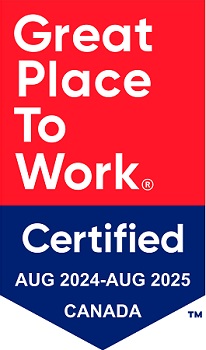
Re-imagining retirement benefits so you and your staff can focus on law.
There’s no denying that the pandemic has changed our relationship to work. Many of us have been asking the big questions, including what’s my work worth—to me, to my employer, to the people I serve? And even with a looming recession, the threat of the “great resignation” means that workers and new hires have the power to demand more from employers than they have in the past.
The legal community hasn’t been immune to these cultural shifts.
According to the 2022 Report on the State of the Legal Market,1 “Attorney turnover has risen to record levels for firms, edging dangerously close to losing almost one-quarter of their associates in 2021.” Interestingly, the report also revealed that compensation isn’t the primary concern for most lawyers. Instead, employee benefits and an overall feeling of appreciation in the workforce are more likely to compel them to stay.
We talked to Dawn Marchand, CEO of CBIA/Lawyers Financial and straight-talking spokesperson for DBplus, about a benefit that gives employers a fighting shot at retaining the talent they need.
Q: WHAT ARE THE MAIN DIFFERENCES BETWEEN DBPLUS AND A MORE TRADITIONAL RETIREMENT PLAN?
A: The most common type of plan being offered by employers is a group RRSP, where both the employee and the employer contribute a percentage of the employee’s earnings. The employee is given a list of mutual fund options to decide for themselves where they want to put that money. But how do you know what to pick? Then, assuming you somehow get it right, down the line when you’re ready to retire, you take the money and once again it’s your job to decide how to manage it and make sure you don’t outlive those funds.
It forces people to be investors when they don’t have that expertise, which is a massive responsibility considering that, for most people, retirement is the biggest part of their savings.
Q: AND WITH DBPLUS YOU DON’T HAVE TO MAKE THOSE DECISIONS?
A: Exactly. The employer and the employee both contribute between 3% - 5% and this money is invested and managed for you. The risk lies not with the individual employee, but with CAAT (The College of Applied Arts and Technology, which opened up their defined benefits program to all Canadians and now manages the DBplus program). They're able to offer their members a set amount of monthly income once they retire. This amount is inflation-protected, indexed to cost of living, and there’s no chance of outliving it. You’re not subject to market volatility either, the way someone who, let’s say, wants to retire this year might be faced with a down market and doesn’t have 10 to 15 years to wait for the market to recover.
Q: OKAY, SO WHAT’S THE CATCH?
A: Well, the employer might be concerned about their portion of the contribution percentage. With DBplus, that adds up to 3-5% percent, and that’s money coming out of the partnership. But they need to realize that they’ll be saving money on fees, administration, technology, and communication because CAAT handles all of that stuff. Also, CAAT follows a joint governance model at every level of management. That means that their board and sponsorship committees are made up of 50% employees and 50% employers, so you always know that there are people making decisions on behalf of both groups.
We’re also seeing employees who are putting a much stronger emphasis on retirement planning. In fact, studies are showing that more and more people are willing to give up percentages in salary for strong retirement benefits. Financial worry is the number one stress among Canadians. If you can help alleviate that for your employees, you’ll have a workplace that’s more focused, engaged, and productive. And, quite frankly, it’s the right thing for employers to do.
Q: WHERE ARE THE RENEWED CALLS FOR A BENEFIT PROGRAM LIKE THIS COMING FROM?
A: Honestly, I don’t know why it’s taken so long for Canadians to have access to a program like this. Back in the day, many employers offered a Defined Benefits program, but those benefits have whittled away. Private companies just saw it as taking on too much risk. A couple of big companies like Sears and Nortel went bankrupt and it affected their employees’ pensions, so smaller companies see that and think, “If the big guys are struggling, how can we manage?”
That’s what’s so special about what CAAT is offering, because it allows smaller businesses to access a benefit that has typically been provided to a select few like government, teachers and unions. I really credit CAAT for bringing defined benefit pensions back. About three years ago, they expanded access to all employers because they truly believe every Canadian should have a Defined Benefit pension plan.
Financial worry is the number one stress among Canadians. If you can take that away for your employees, you’ll have a workplace that’s more focused, engaged, and productive.
Q: WHAT HAS THE RESPONSE BEEN LIKE SO FAR IN THE LEGAL COMMUNITY?
A: There’s been an immediate interest, but it takes law firm management to implement it. So far, over 100 sole practitioners and a number of small firms have come to us to set up DBPlus, and there’s growing interest with medium-sized firms, too.
With the big firms, it’s a longer discussion. I’ve talked to a few of them, and they all say the same thing. "We get it, we think it’s good, we know we’ll have to do it eventually, but we don’t necessarily want to be the first.” But word is getting around, interest is growing, and new firms are coming on board every month.
Q: WHAT ARE THE FIRST STEPS THAT A FIRM SHOULD TAKE TO SET UP DBPLUS?
A: Schedule a meeting with our pension specialist or fill out a two-page application. It’s not a difficult process at all, and overall takes just two months to get your employees set up. Going to CAAT directly would take you over 6 months because we get our applications fast-tracked. And after you’re set up, CAAT does everything: webinars for employees and the payroll administrator, and member communication. It’s really a turn-key solution. This is where I like to joke, “And it comes with a free set of steak knives!” But it really is that good. I'm not selling anything. Lawyers Financial doesn’t make money from this. We do this because our board of directors saw that too many lawyers are retiring with nothing and it’s not right. We, too, believe every Canadian has the right to retire with grace and this is a program that can make that happen.
When you became a lawyer, your pension (or lack thereof) was probably the last thing on your mind. But now, questions about long-term financial security loom large for those of us who’ve come to think differently about our work. While the stabilized income DBplus offers can’t safeguard against all of life’s big surprises, the security it offers can alleviate financial anxiety, allowing you and your employees to focus on all the things that drew you to the profession in the first place.
Source: 1. Newswire.ca: “Law firms can’t just keep throwing money at growing talent war,” January 2022.


